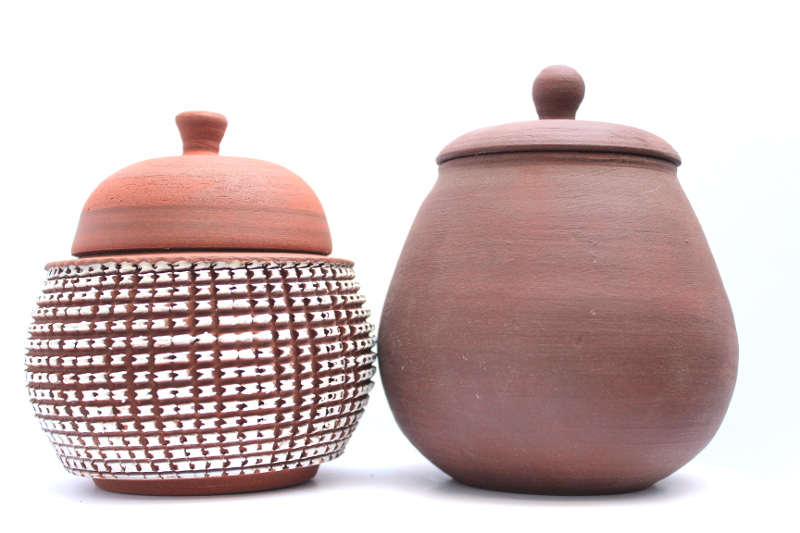Because of my bonsai pots I am always looking for a red stoneware clay that is frost resistant and has exactly the color, THE color, a dark, violet red-brown that is simply not describable. Some years ago I experimented with various iron oxides and could achieve very good results. Only the application of the iron… Read More
Tag: Experiment
A new porcelain and clay body Markus Böhm has developed a new porcelain body especially for usage in wood fires. Of course I needed to do some material tests with this porcelain. The body is stable at 1300°C, is getting translucent and shows the pink color effects caused by the minimal iron oxide contamination. The… Read More
This summer we had the stupid idea to develop a glaze that consists solely of materials that can be found on the shore of the Baltic Sea. Talcum and flint stone are easy to identify but what about feldspar? The moraine rubble contains many different materials and granite can have high amounts of feldspar (besides… Read More
To measure the degree of reduction in the wood fired kilns, I fired a set of glaze samples in a capsule (with a piece of coal for additional reduction).In the following picture are the results of the capsule (inner side) and of the kiln (outer side) shown. 1: Hamada 2: Pale Ash 403 3: Local… Read More
Glossy Nuka Glaze is getting especially nice, if metal oxides cause color streaks (e.g. iron oxide or cobalt oxide). 56,2 Custer Feldspar 11,2 Talcum 11,2 Bone Ash 33,8 Flint 22,4 Whiting 11,2 Bentonite 37 Wood Ash 16,8 Frit 3134
Easy white glaze, getting dull in combination with ash.
The combination of the two coloring components Cobalt and Titanium result in many different green colors. However, Cobalt blue can show eventually. 140 Nepheline Syenite 4 Gerstley Borate 16 Ball Clay (Hymod AT) 10 Talcum 30 Petalite 2 Cobalt Carbonate 4 Rutile
This glaze achieves it´s beauty by superposition of a white and red Shino glaze. Half of the white glaze is enriched with 10% red iron oxide. The red Shino is applied first. When dried, the white Shino is thickly applied and then decorated while still wet. The red Shino from below shall be visible.
Glazes with a high iron content (Temmoku, Oilspot, Tea Dust) are the logical continuation of the Seladons glazes (low iron). Bailey´s Red Glaze The recommended sp. gr. is 145.
A fantastic glaze in principle, but it is not easy to get reproducible results. According to literature, the glaze should have a spec. gravity of 160 (1 liter glaze should weight 1.6 kg). It is mandatory to apply the glaze very thick and on both sides, to avoid tensions.
The simpler, the better: 80/20 Nepheline Syenite and EPK. Beautiful red-orange if applied thin (spray gun), no run-off at 1300°C if applied thick, does not crackle and can become very white. For your info: all experiments have been performed with Wittgert 11sf 0-0,2.
Shino Experiment 3: Penn State Shino
Variations of the flux. Penn State Shino: 14,6 Nepheline Syenite 34 Potassium Feldspar 29 Spodumen 9,7 Standard Kaolin 4,9 Hymod AT 7,8 Soda (calz.)
Shino Experiment 2: Shino Currie 2
A very simple recipe: Flux and variations of Kaolin. Shino Currie 2a: Standard Kaolin Shino Currie 2b: EPK Significantly more red with EPK, if applied thin (see also inside of the cup). If applied thickly, glaze is getting real white, as can also be seen in the picture, where it has been placed on top… Read More
Shino Experiment 1: RD Dry Shino #16a
First a test with variations of the iron content of the ball clays. RD Dry Shino #16a: Albany Slip RD Dry Shino #16: Hymod AT Bother are not so interesting (boring).










